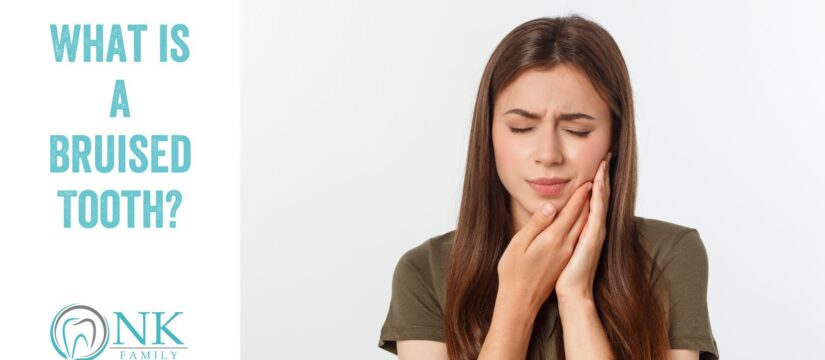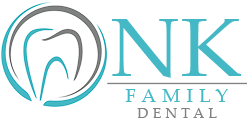
If you’re conscientious about your oral health, you get regular dental examinations and cleanings, and take care to prevent cavities and periodontal disease. But there are other dangers to your teeth to be aware of – for example, bruising a tooth.
It may sound odd, but teeth can be bruised or sprained. How so? Each tooth has a periodontal ligament — a system of collagenous connective tissue fibers that connect the root of a tooth to its socket. Each tooth also has cementum — a hard connective tissue covering the tooth root, giving attachment to the periodontal ligament. Our blog post — “Tooth Anatomy 101” — covers this topic in detail.
Basically, a ligament is a band of tissue that connects bones, joints or organs. In most areas of the body, ligaments hold them in place and help you move properly. However, teeth don’t move as the result of a conscious act. Of course, they do move during orthodontic treatment — when the process is guided and gradual — or during stress or trauma — when it is not.
How Can a Tooth Become Bruised?
As you may have guessed, stress or trauma can cause a tooth to bruise. It occurs when tooth ligaments become aggravated from too much pressure or biting down too hard. Golden State Dentistry provides the following common causes:
- Clenching your teeth.
- Grinding your teeth at night (bruxism).
- Biting on hard foods.
- Nail biting.
- Dental surgeries or procedures (e.g. root canal).
- Overfilled or underfilled tooth cavity.
- Tooth infection.
- Trauma from small objects, such as bones, seeds, kernels, or ice.
- Sinus problems, such as allergies or a cold.
Other causes can include sports injuries or any blow to the mouth.
So what happens to the tooth at the time of injury? Colgate offers this tooth’s-eye-view:
- The soft tissue and ligaments around the tooth absorb the impact.
- Then, the capillaries around the tooth burst and travel through the apical foramen — aka the opening at the tip of the root.
- That leads to tooth discoloration and pain — like bruised skin. The pain might not be limited to the bruised tooth but affect all teeth, front and back.
How You Can Identify a Bruised Tooth?
Pain is the first sign of a bruised or sprained tooth. Dentists specifically look for a dull or achy pain that won’t go away as indication of a ligament sprain. You also may experience a sharp, localized pain in one tooth. However, if the pain is hard to pinpoint, it is most likely an infection or a toothache caused by tooth decay or periodontal disease.
Although the trauma occurs internally, there can be visible signs that a tooth is bruised. The tooth may change color to pink or gray. If it’s pinkish, the tooth may heal, but don’t take the risk of assuming that it will survive without treatment. Sometimes the pinkish hue indicates internal root resorption, a condition that can lead to tooth loss as your body rejects the tooth. Schedule an appointment with your dentist to examine and treat it.
When the injured tooth turns gray, it usually means the pulp is no longer vital and is at risk for infection or decay. Our blog post — “What is a Dead Tooth?” — covers this topic in detail. The next step typically is a root canal, followed by capping the tooth with a crown.
Healthline lists other symptoms of a bruised tooth as follows:
- Lingering soreness.
- Inflammation.
- Sensitivity.
- Redness.
- Bleeding gums.
Treatment Options for a Bruised Tooth
As with any type of dental trauma, call your dentist for an emergency appointment. NK Family Dental can accommodate same-day emergency appointments, as well as provide support for after-hours emergencies. Your dentist will most likely take the following steps:
- Take X-rays in case there’s damage that isn’t visible.
- Check for issues, such as abscess, sensitivity, or loose teeth.
- If necessary, recommend a dental splint or other hardware, an extraction, a root canal, or other oral treatment.
While waiting for the tooth to heal and for your dentist to determine the best treatment solution, Colgate recommends the following steps to soothe the ache or prevent future trauma.
Take over-the-counter pain relievers — Inflammation from an oral injury can be painful. Medication like ibuprofen or acetaminophen is often enough to treat swelling and aches. It’s unlikely your dentist will prescribe any stronger painkillers.
Ask about a custom nightguard or mouthguard — If you grind your teeth while sleeping, wearing a nightguard will protect your teeth and ligaments from future damage. And wearing a custom mouthguard while playing sports is always a safe bet to prevent injuring your teeth and gums. Both can protect your bruised tooth while it heals.
Be patient — Treatment for a bruised tooth might not happen immediately. Take time to heal and follow your dentist’s instructions to prepare for the next treatment steps. Also, be aware that tooth trauma healing time can vary.
The Take-Home Message
A bruised or sprained tooth requires immediate attention if you experience such symptoms as a dull, constant pain and/or the tooth turns pinkish or gray. Preventing this type of injury is possible by being careful when you bite down on food or chew, and avoiding bad habits — such as chewing ice and using your teeth as tools. If you grind your teeth at night or play contact sports, ask your dentist to be fitted for a custom nightguard or mouthguard. When undergoing dental treatments that change your bite, communicate honestly with your dentist if your bite feels “off.” Most types of such treatments allow the bite to be adjusted before the final step.
At NK Family Dental, it is our mission to provide the highest quality and most compassionate oral care to our Chicago patients, including both dental and periodontal services. Our practice is trusted for advanced oral surgery procedures and comfortable root canal treatment.
Our team of experienced, dedicated dental professionals will help address your oral health concerns, and determine the best solution for you based on your individual situation. We strive to identify treatment options that fit your needs.
Our dental specialists include our general dentist, Dr. Nilofer Khan, our endodontist, Dr. Sabek, and our periodontist, Dr. Amir Danesh. Dr. Danesh is a board-certified periodontist and Diplomat of the American Board of Periodontology. He has contributed to the publication of two books, as well as published over 20 papers in prestigious dental research journals.
We serve the neighborhoods of Logan Square, Bucktown, Humboldt Park, and Wicker Park with the dedication that’s earned us the reputation as the Best Dentist in Chicago!
We understand that the main concern you may have is cost, which is why we accept all major PPO plans for dental insurance and also offer our in-house dental plan. Please see our financing page for more information.
Schedule your visit through ZocDoc, or contact us directly. We look forward to treating you soon!
